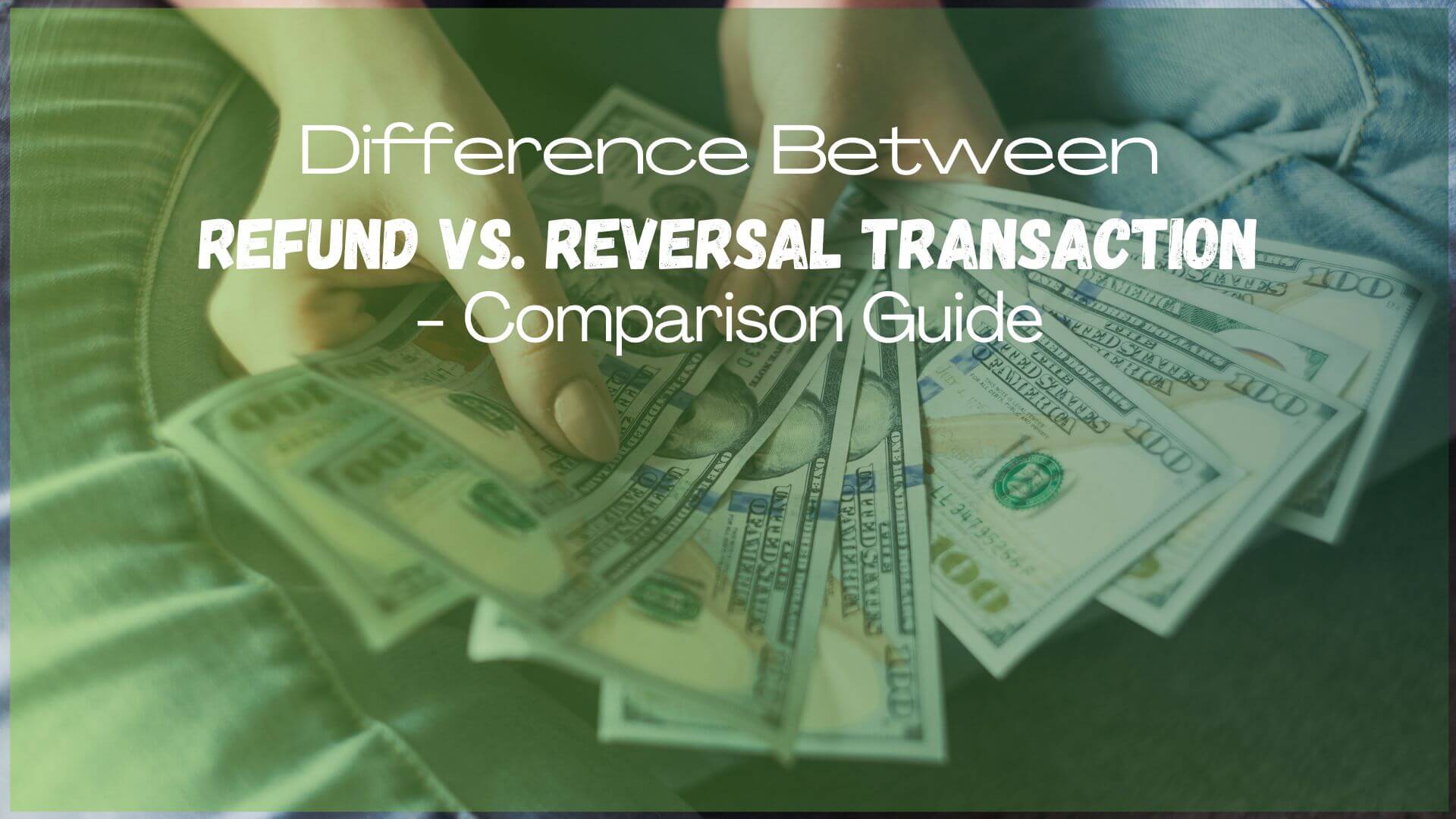In the wonderful world of business and ecommerce, not all transactions are successful. There are times when transactions don’t go as planned, sometimes customers simply change their minds, and sometimes businesses make mistakes. When this happens, it’s important to understand the difference between refund and reversal transaction.
Although both of these transactions involve money, they differ in important ways. In this post, we’ll outline the difference between refund and reversal transaction so that you can make the best decision for your business. This guide will help you do just that!
We will introduce refund and reversal transactions and outline the differences between the two so that you will be able to make the best decision for your business.
Refund Vs. Reversal Transaction
To clearly differentiate one from another, let’s define and discuss each term:
Refund
A refund is when a customer requests their money back after making a purchase. This can happen for various reasons, such as if the customer is unhappy with the product or service they received.
From a customer perspective, refunds are good because they give the customer peace of mind and show that the business is committed to customer satisfaction. However, from a business perspective, refunds are a bad thing because they represent a loss of revenue. Therefore, the company needs to ensure that its products will satisfy customer needs and, in doing so, keep the instances of refunds to a minimum.
As mentioned, a refund is required when the transaction has already gone through. The money is always returned using the same method used to make the payment in the first place. That means the refund would be deposited on the same credit card if the customer paid for an item using their credit card. If the customer used a debit card, funds would be reimbursed to that same account.
In most cases, it will take five to 14 days to process and complete a refund. So, if you’ve not received the refund for more than two weeks, you should contact the merchant to follow up with your request.
Reversal
On the other hand, a reversal transaction is made before the funds hit the merchant’s account. It is when a transaction is voided before completion. A reversal transaction usually makes reimbursements straightforward. With that said, here are some of the common reasons for a reversal transaction:
- The merchant suspects the transaction to be fraudulent.
- The product is sold out or out of stock.
- The customer was charged an incorrect amount.
- The customer has changed their mind.
- A customer quickly realizes their dissatisfaction with a product after making a payment.
- The transaction was carried out twice by mistake.
- The customer sent the payment to the wrong account.
To receive reimbursement via reversal transaction, the merchant or customer must contact their bank to cancel and reverse the payment. If you’re the customer, you can contact the merchant to verify if the payment hasn’t hit their bank account. You can then state your reasons for seeking a reversal transaction.
Examples of Refunds and Reversal Transactions
To further clarify both refund and reversal transactions, here are some examples that illustrate the terms respectively:
Refund Example
A consumer ordered a pair of shoes on Amazon. It took over a week to arrive, at which time the consumer’s payment for the item had already been processed. After delivery, the consumer realized that it was the wrong size.
The consumer took action to request a refund from the Amazon merchant. Since the payment had already gone through, the consumer was only required to contact the merchant, not their bank. The merchant confirms the refund and starts processing the refund.
Reversal Transaction Example
A consumer ordered a new laptop on eBay. After filling in the payment details and confirming the order, the merchant informed the consumer that the laptop had sold out. Noticing that the payment was still pending, the consumer then contacted their bank to cancel the transaction.
How ReliaBills Handles Refunds and Payment Reversal
If you’re using ReliaBills as your invoicing and payment processing solution, you need to know how our system handles refunds and payment reversals. As a business, dealing with both profit-hindering instances can be tough. But it’s important to conduct these processes the right way. Fortunately, ReliaBills has you covered.
Reversal Transactions
ReliaBills has an ‘Automated Reversed Payment Fees’ feature, which lets you recover funds from failed or reversed payments and apply fees whenever a payment reverses. Thanks to ReliaBills and its recurring billing feature, payment processing will be fluid and automatic. Our system will handle invoicing and payment collection for you, so you won’t have to deal with it yourself.
Once you enroll your customers to AutoPay, our system will be able to charge and collect payment from them automatically. Whenever a payment fails or reverses, our system will handle it for you quickly and efficiently. This way, you can focus on other important aspects of your business.
Refunds
If your customer requests a refund, you can contact customer support, and we’ll handle the process on your behalf. All you need is to reach out to one of our representatives, and we’ll take it from there.
At ReliaBills, we understand how important it is to keep your business running smoothly. That’s why we offer a wide range of features to help you with your invoicing and payment processing needs. With our system, you can focus on what’s important – growing your business. Sign up today and upgrade your account to ReliaBills Plus to unlock the full potential of our system. You won’t regret it.
Wrapping Up
Knowing the difference between refund and reversal transaction is essential in dealing with them effectively. Hopefully, this guide has helped clear any confusion you may have had about the two terms. For other interesting topics about invoicing and payment processing, be sure to check the ReliaBills blog page.


